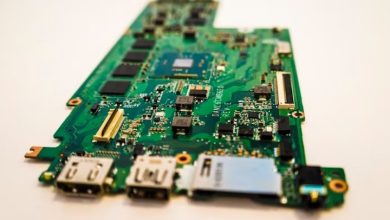What Is an Ultrasonic Cleaner and How Does One Work?

Nothing is more frustrating than dirt’s you can’t get rid of. Objects we love can be ruined by stubborn grease, filth, and dust, but technology is continually creating new ways to keep our treasures clean. Then there are ultrasonic cleaners. These handy devices can get rid of all kinds of dirt, but how do they operate and where can you buy one?
What are Ultrasonic Cleaners?
Ultrasonic cleaners are devices that use high-frequency sound waves, typically above the range of human hearing, to clean various objects. These devices create microscopic bubbles in a cleaning solution through a process called cavitation. The collapse of these bubbles generates immense energy, dislodging dirt and contaminants from the surfaces of the items being cleaned.
Components of an Ultrasonic Cleaner
A typical ultrasonic cleaner consists of several key components:
Transducer: Converts electrical energy into ultrasonic waves.
Generator: Provides electrical energy to the transducer.
Tank: Holds the cleaning solution and the items to be cleaned.
Cleaning Basket or Rack: Helps in the proper placement of items for effective cleaning.
Control Panel: Allows users to set cleaning parameters, such as time and intensity.
How Ultrasonic Cleaners Work
1. Generating Ultrasonic Waves
Ultrasonic cleaners generate high-frequency sound waves through the transducer. The transducer converts electrical energy into mechanical vibrations, which are then transmitted into the cleaning solution. These vibrations create a pattern of compression and rarefaction waves, forming the ultrasonic waves that propagate through the solution.
Read Also: What Is Pixel Binning in Mobile Photography? How Does It Work?
2. The Cavitation Process
Cavitation is the key mechanism that makes ultrasonic cleaning so effective. As the ultrasonic waves travel through the cleaning solution, they create alternating high-pressure and low-pressure regions. In the low-pressure regions, tiny bubbles or voids form in the liquid. These bubbles continue to grow as the pressure decreases further.
When the bubbles reach a certain size, the surrounding high-pressure areas cause them to collapse rapidly. This phenomenon is known as implosion or cavitation. The implosion of these bubbles generates intense shockwaves, releasing tremendous energy in a localized area. The energy released during cavitation dislodges dirt, grease, and contaminants from the surfaces of the items being cleaned, effectively cleaning them.
Effectiveness of Ultrasonic Cleaning
The cavitation process in ultrasonic cleaners allows for thorough cleaning, even in hard-to-reach areas. The microscopic bubbles can penetrate crevices, cracks, and intricate designs that are inaccessible by traditional cleaning methods. The implosions generated by cavitation create high-energy microjets that can dislodge contaminants from surfaces with precision.
Moreover, ultrasonic cleaners are not limited to just removing visible dirt. They can effectively clean at a microscopic level, removing contaminants such as bacteria, viruses, oils, fingerprints, and even oxidation layers from metal surfaces. This makes ultrasonic cleaning suitable for a wide range of applications in various industries.
Applications of Ultrasonic Cleaners
1. Jewelry Cleaning
Ultrasonic cleaners are widely used in the jewelry industry for cleaning precious metals, gemstones, and intricate jewelry pieces. The gentle yet powerful cleaning action of ultrasonic waves ensures thorough cleaning without causing damage or scratches.
2. Dental Instrument Sterilization
Dental clinics and laboratories rely on ultrasonic cleaners to sterilize and clean dental instruments. The ultrasonic cleaning process effectively removes bacteria, blood, and other contaminants, ensuring proper instrument hygiene and preventing cross-contamination.
3. Automotive Parts Cleaning
Automotive workshops and manufacturing plants utilize ultrasonic cleaners to clean various automotive parts, such as carburetors, fuel injectors, engine components, and even larger items like cylinder heads. The ultrasonic cleaning process reaches deep into the intricate parts, removing grease, carbon deposits, and other contaminants, thereby improving performance and efficiency.
4. Electronics Cleaning
Electronics manufacturing and repair industries benefit from ultrasonic cleaners to clean delicate electronic components. The gentle cleaning action of ultrasonic waves eliminates dust, flux residues, and other contaminants without causing damage to sensitive electronic parts.
Read Also: What Is Vsync (or Vertical Sync) and How Does It Impact Games?
Benefits of Using Ultrasonic Cleaners
1. It Aids Efficient and Thorough Cleaning
Ultrasonic cleaners provide efficient and thorough cleaning results, surpassing traditional cleaning methods. The microscopic bubbles created by cavitation reach every nook and cranny, ensuring comprehensive cleaning of even the most intricate items.
2. It’s Gentle on Delicate Items
Despite their powerful cleaning capabilities, ultrasonic cleaners are gentle on delicate items. The cleaning process does not involve harsh scrubbing or abrasive chemicals, reducing the risk of damage to fragile surfaces, gemstones, or intricate designs.
3. It Saves Time and Labor
Ultrasonic cleaning is a time-saving method that requires minimal manual effort. Once the items are placed in the cleaner and the cleaning cycle is set, the ultrasonic waves do the work, allowing users to attend to other tasks. This makes ultrasonic cleaners particularly beneficial for commercial and industrial cleaning needs where large quantities of items require cleaning in a short amount of time.
4. It Ensures Eco-Friendly Cleaning
Ultrasonic cleaners offer an environmentally friendly cleaning solution. The process utilizes water-based cleaning solutions instead of harsh chemicals, reducing the impact on the environment. Additionally, the efficient cleaning action of ultrasonic waves reduces the need for excessive water usage.
Considerations When Using Ultrasonic Cleaners
Safety Precautions for Using Ultrasonic Cleaners
While ultrasonic cleaners are generally safe to use, it is important to follow safety guidelines. Avoid direct contact with the cleaning solution, especially if it contains chemicals. Use protective gloves and eyewear when handling contaminated items or cleaning solutions. Adhere to the manufacturer’s instructions and guidelines for safe operation.
Suitable Cleaning Solutions
Choosing the right cleaning solution is crucial for optimal ultrasonic cleaning. Different items may require specific cleaning solutions to achieve the desired results. It is important to select a cleaning solution that is compatible with the item being cleaned and the material of the ultrasonic cleaner tank. Consult the manufacturer’s recommendations or seek professional advice when unsure.
Proper Handling and Maintenance
Regular maintenance and proper handling of the ultrasonic cleaner ensure its longevity and optimal performance. Clean the tank and transducer regularly to remove any residue or contaminants. Follow the manufacturer’s guidelines for maintenance procedures. Store the cleaner in a clean and dry environment when not in use.
What to Consider when buying Ultrasonic Cleaner
1. Size and Capacity
Consider the size and capacity of the ultrasonic cleaner based on your specific cleaning needs. Smaller cleaners are suitable for personal or home use, while larger ones cater to commercial or industrial applications. Ensure that the tank size can accommodate the items you intend to clean.
2. Frequency and Power
Ultrasonic cleaners operate at different frequencies, typically ranging from 20 kHz to 80 kHz. Lower frequencies provide more power for heavy-duty cleaning, while higher frequencies are suitable for delicate items. Consider the nature of the items you will be cleaning and choose the appropriate frequency and power level accordingly.
3. Additional Features
Some ultrasonic cleaners offer additional features that enhance usability and convenience. These may include digital timers, adjustable power settings, heating elements, and degassing functions. Evaluate your specific needs and consider these features when selecting an ultrasonic cleaner.
Tips for Optimal Ultrasonic Cleaning
1. Proper Loading and Placement
Arrange the items to be cleaned in a way that maximizes their exposure to the ultrasonic waves. Avoid overcrowding the tank, as this can hinder the cavitation process. Use a cleaning basket or rack to keep smaller items organized and prevent direct contact with the tank bottom.
2. Setting the Cleaning Cycle
Follow the manufacturer’s instructions for setting the appropriate cleaning cycle. Factors such as cleaning time, temperature, and power level may vary depending on the items and contaminants being cleaned. Experiment with different settings to achieve optimal cleaning results.
3. Drying and Finishing
After the ultrasonic cleaning process, thoroughly rinse the items with clean water to remove any remaining cleaning solution. Use a gentle stream of water or a soft brush to remove loosened dirt or residue. Finally, dry the items properly before storage or further processing to prevent moisture-related issues.
How to Maintain an Ultrasonic Cleaner
Regular maintenance is important to ensure the optimal performance and longevity of your ultrasonic cleaner. Here are some maintenance tips:
Clean the tank and transducer regularly: After each use, drain the cleaning solution and wipe the tank with a soft cloth. Remove any residue or contaminants from the tank and transducer to prevent build-up that could affect the cleaning performance.
Check and replace the cleaning solution: Regularly inspect the cleaning solution for any signs of contamination or depletion. If the solution appears cloudy or loses its effectiveness, it’s time to replace it with fresh solution. Follow the manufacturer’s instructions for proper dilution ratios and recommended cleaning solutions.
Inspect and replace damaged parts: Periodically check the condition of the cleaning basket or rack, as well as any seals or gaskets. If any parts are damaged or worn out, replace them promptly to maintain the efficiency and safety of the ultrasonic cleaner.
Store the ultrasonic cleaner properly: When not in use, store the ultrasonic cleaner in a clean and dry environment. Keep it covered to protect it from dust and ensure that the power cord is stored safely to avoid any potential damage.
Read Also: Chroma Subsampling: What Is It and Why Does It Matter?
Conclusion
Ultrasonic cleaners are versatile and efficient tools for various cleaning applications. Ultrasonic cleaners offer a powerful and efficient cleaning solution for a wide range of items and surfaces. By harnessing the energy of ultrasonic waves and the cavitation process, these cleaners can effectively remove dirt, grime, and contaminants with ease. From jewelry to automotive parts, electronics to dental instruments, ultrasonic cleaners provide thorough and gentle cleaning, saving time and effort. So, why settle for mediocre cleaning when you can achieve remarkable results with an ultrasonic cleaner?
Frequently Asked Questions (FAQs)
Can ultrasonic cleaners damage electronic components?
When used properly, ultrasonic cleaners are generally safe for cleaning electronic components.
Do I need to use a specific cleaning solution with an ultrasonic cleaner?
The choice of cleaning solution depends on the type of item being cleaned and the nature of the contaminants. Many ultrasonic cleaners work effectively within water-based solutions, but for certain specialized applications, specific cleaning solutions may be recommended.
Can ultrasonic cleaners remove rust from metal surfaces?
Ultrasonic cleaners are effective at removing light surface rust from metal surfaces, but extensive or deep rust may require additional treatments or specialized rust removal techniques.
Are ultrasonic cleaners suitable for professional use?
Yes, ultrasonic cleaners are commonly used in professional settings such as dental clinics, jewelry stores, laboratories, automotive workshops, and electronics manufacturing facilities. They offer efficient and consistent cleaning results, making them ideal for professional applications.
Can ultrasonic cleaners be used to clean eyeglasses?
Yes, ultrasonic cleaners are safe and effective for cleaning eyeglasses. Always remove any vulnerable parts, such as coatings or decorative elements, before placing the glasses in the cleaner.
Are ultrasonic cleaners noisy?
Ultrasonic cleaners produce a low humming or buzzing sound due to the high-frequency vibrations.
Can ultrasonic cleaners remove stains from clothing?
Ultrasonic cleaners are not typically used for removing stains from clothing. They are more commonly used for cleaning hard surfaces, jewelry, or small items.
Can ultrasonic cleaners be used for cleaning food or kitchen items?
Ultrasonic cleaners are not recommended for cleaning food items or kitchen utensils. The cleaning process may not effectively remove bacteria or food particles, and there is a risk of cross-contamination.







